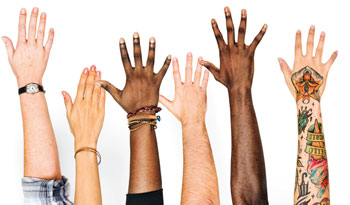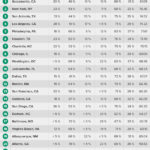By Kaitlyn Matson
This article was previously posted at American Veterinary Medical Association (AVMA).
Veterinary colleges are continuing efforts to build a more diverse profession by creating and filling staff positions that focus specifically on diversity and inclusion on their campuses.
The Multicultural VMA hosted the session, “Directors of Multicultural Affairs and Community Outreach Share Their Endeavors at Colleges of VetMed” at AVMA Convention 2019. Three speakers relayed tips for creating and holding a diversity and inclusion position and explained why these positions are vital for the veterinary profession.
“It is very important that if you are thinking about becoming a diversity officer or you’re thinking about establishing one at your school, you need to make sure there is a direct report to the dean,” said Latonia Craig, EdD, the assistant dean of diversity and inclusion at Purdue University College of Veterinary Medicine. “If there is buy-in from the top, it will be easier to relay that message (of diversity and inclusion) to faculty and staff.”

Dr. Craig’s job includes leading strategic diversity and inclusion efforts to advance the veterinary college’s mission and increasing the number of underrepresented students in veterinary medicine through intentional recruitment and retention initiatives, she said.
The speakers suggested that a veterinary college form a diversity committee, perform a climate survey, discover what the program is already doing with respect to diversity and inclusion, and try to expand and build on those efforts.
Dr. Allen Cannedy, director for diversity and multicultural affairs at North Carolina State University College of Veterinary Medicine, said a strategic plan, commitment from leadership, targeted training, and communication are all important elements of this work.
The effort to push diversity and inclusion on veterinary college campuses has largely been led by the Association of American Veterinary Medical Colleges. The organization launched its DiVersity Matters initiative in 2005, in part because of the lack of diversity within the profession. The AAVMC recently received a national 2019 “Power of A” Silver Award from the American Society of Association Executives for its DiVersity Matters program.
“For 14 years now, our staff has diligently worked to advance diversity and inclusion, with an enterprise-wide emphasis, creative programing and leading initiatives,” said Dr. Andrew T. Maccabe, AAVMC CEO, in an Aug. 13 press release. “We are passionate about this work and it’s gratifying to earn this recognition, which also honors the work being accomplished by countless volunteers at our member institutions.”
DiVersity Matters is currently working on a project to develop a tool for diversity program assessment at AAVMC member colleges. The tool will be specific to colleges of veterinary medicine and should be rolled out in 12-18 months, said Lisa Greenhill, PhD, the AAVMC senior director for institutional research and diversity.
Season 5 of the Diversity and Inclusion on Air podcast launched at the end of August and features new shows that explore spiritual life in veterinary medicine, disabilities, and what to do when you witness or experience an act of discrimination.
Although the tasks of a diversity officer can be daunting, it is important to remember that change takes time, said Dr. Brittany Moore-Henderson, faculty and community outreach veterinarian at Mississippi State University College of Veterinary Medicine.
“Change is hard, and it takes a long time for things to change in academia,” she said. “How do you eat an elephant? One bite at a time.”










